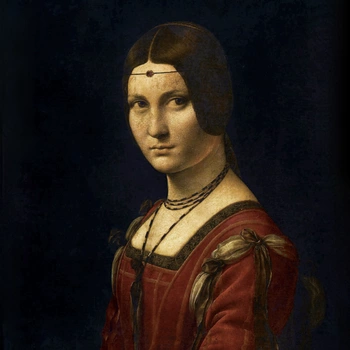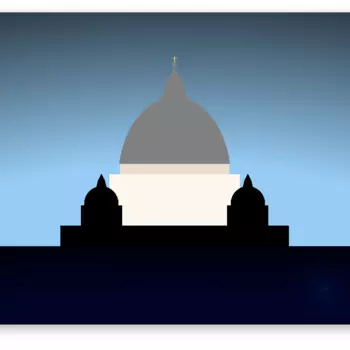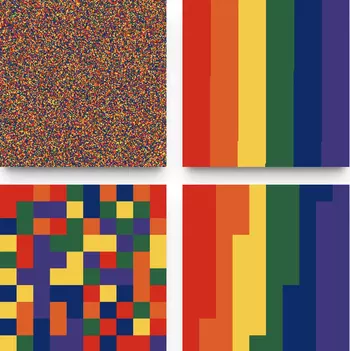Nico Franz
Nico Franz is a Stuttgart art collector, copyist and programmer. Today he is considered the best-known representative of copyism. His extensive oeuvre includes works on all styles of Copism, such as the Art of Chance or New Realism.
Childhood and Youth
Parental home
Stuttgart copyist Nico Franz was born the fourth child of the largely unsuccessful art dealer Jan Franz and his wife Catharina Franz. The couple bought large quantities of old master art copies shortly after Nico's birth. However, they had to give up their business soon after due to low demand. They then stored the unsold art copies in their apartment for several years. This brought Nico Franz into contact with the old masters at an early age, whose works he studied from then on.
Drawing talent
Soon he was making his own drawings and showed extraordinary talent in drawing. From the notes of teachers of the time, we know of a "beautiful" depiction of a swimming swan, a "great" design for the stage set of the operetta "Der Freischütz" and a "very good" portrait of Katharina Witt. The remarkable thing about this portrait is that the famous figure skater never posed for it herself. He painted her exclusively from his imagination. Many other works from this period are known, but they are all lost today and can only be reconstructed from the memories of contemporary witnesses.
Fine arts
But he did not only try his hand at painting. The fine arts seemed to him to be a larger complex. He practiced architectural designs, not afraid to try experimental new building materials, such as sand or even paper. He made enormous sculptures from frozen ice, to the delight of those who saw them. Likewise, he made a "landscape of grasses", now unfortunately withered, a minimalist but lifelike reproduction of a park landscape. Since the weather often left his mostly outdoor sculptures to destruction, he soon focused only on painting.
Early Works
His attention to detail was legendary. He would often sit for months, sometimes years, on a painting, only to ponder the next stroke, only to leave the painting unfinished, and often barely begun, and turn his attention to the next work. From this time are still preserved many white sheets. I myself own a wonderful white sheet of him.
He could sit for hours and stroke a piece of velvet. That's how he pondered his works.
Cottbus period
Copies of old masters
His work progressed unsteadily in the following years, until around 2000 he abandoned his style of painting, which emphasized individualism, and gradually became a follower of Leonardo's school, at the latest from 2003. Following its tradition, he first began to copy the works of old masters. He made rapid progress in this, but after the first exhibitions in his private rooms, all of which flopped, he turned away from painting in disappointment in 2006 at the latest. The few surviving works from that period eventually fell victim to the great Grill fire of 2020. Among them were his most successful copies, a drawing of Isabella Brant by Rubens and that of a twelve-year-old Christ by Dürer. However, a few works were saved shortly beforehand as digital reproductions. In order to protect them from light and mechanical damage, however, they are rarely shown in public today.
If the art is free of every subjective selection and only due to the coincidence itself, only then is this my work truly perfect.
Stuttgart Period
Stuttgart Period - Birth of Copism
Experiments with new painting techniques
Very little is known about the following years. It is certain that he was in Stuttgart from about 2008, where he began to experiment with pixels on canvas. He quickly discovered that colors applied in this way lost none of their luster, even after a long time, and that his works were thus far more durable than with conventional canvas painting.
"Moving Piet" - The copist first work.
Then, from 2013, his first works gradually appeared, but he exhibited them only sporadically in public. Largely unnoticed by the rest of the art world, his digital debut work "Moving Piet" was enthusiastically received by the audience at a Young Digital Artists convention in Stuttgart's Römerkastell in 2014. Still based on Adobe's After Effects, Nico Franz already shows here the goal he has consistently pursued from now on, not only to transform his art into digital modernity, but also, and from today's perspective almost exclusively, the art of those who came before him. Copy and reinterpretation become his main motif from now on.
1981 Cottbus, DE
Moving Piet, 2014
Animation on Aftereffects
The discovery of the Monas
If "Moving Piet" still represented the animation of a static model, he refused to continue on the path of movement and initially sought the smallest common element of all his previous works as the basis for his future work. He finally recognized it in the beginning of any painterly action, the monas, the point on the canvas itself. Starting in 2014, he produced a series of works in pixels on canvas, stylistically probably intended to recall Andy Warhol, but more consistent in their randomness and thus even freer for misinterpretation. This form of expression typified by mechanical randomness was from now on the basis of his art, because "if it [art] is free of any subjective selection and only due to chance itself, only then is this my work truly perfect".
My art should already be perfect now? No, I am far away from that. The randomness of the selection appears to me as the most imperfect thing.
Present
Nico Franz exhibits parts of his complete works in the gallery nicofranz.art all year round.
Honors, prizes and awards
Nico Franz has received countless honors and awards over the years. All nine are listed below:
- 2000 Branitzer Moon (2006 revoked)
- 2001 Appointment as a member of the Dark Order aka „Black Cloud“ (Withdrawal 2008)
- 2005 Grand Prix de Ja-VU de la dansons (2005 revoked)
- 2007 FranC Cline Memory Award
- 2011 Golden-Bunker-Price
- 2015 Cool! Yes! Award
- 2017 Knight of the Ordo Leonardo
- 2021 Moonshot Award
- 2021 Golden spike on large leaf
I award my prizes exclusively to myself. How else could they be objective?
![[Translate to english:] [Translate to english:]](/fileadmin/_processed_/b/b/csm_selbstportaet-mit-canvas_5069362d61.webp.pagespeed.ce.uVJyKzjxOl.webp)

![[Translate to english:] [Translate to english:]](/fileadmin/_processed_/8/b/csm_leonardo-alle-gemaelde_2dc4b01ef6.webp.pagespeed.ce.ohfmgl8OfF.webp)

